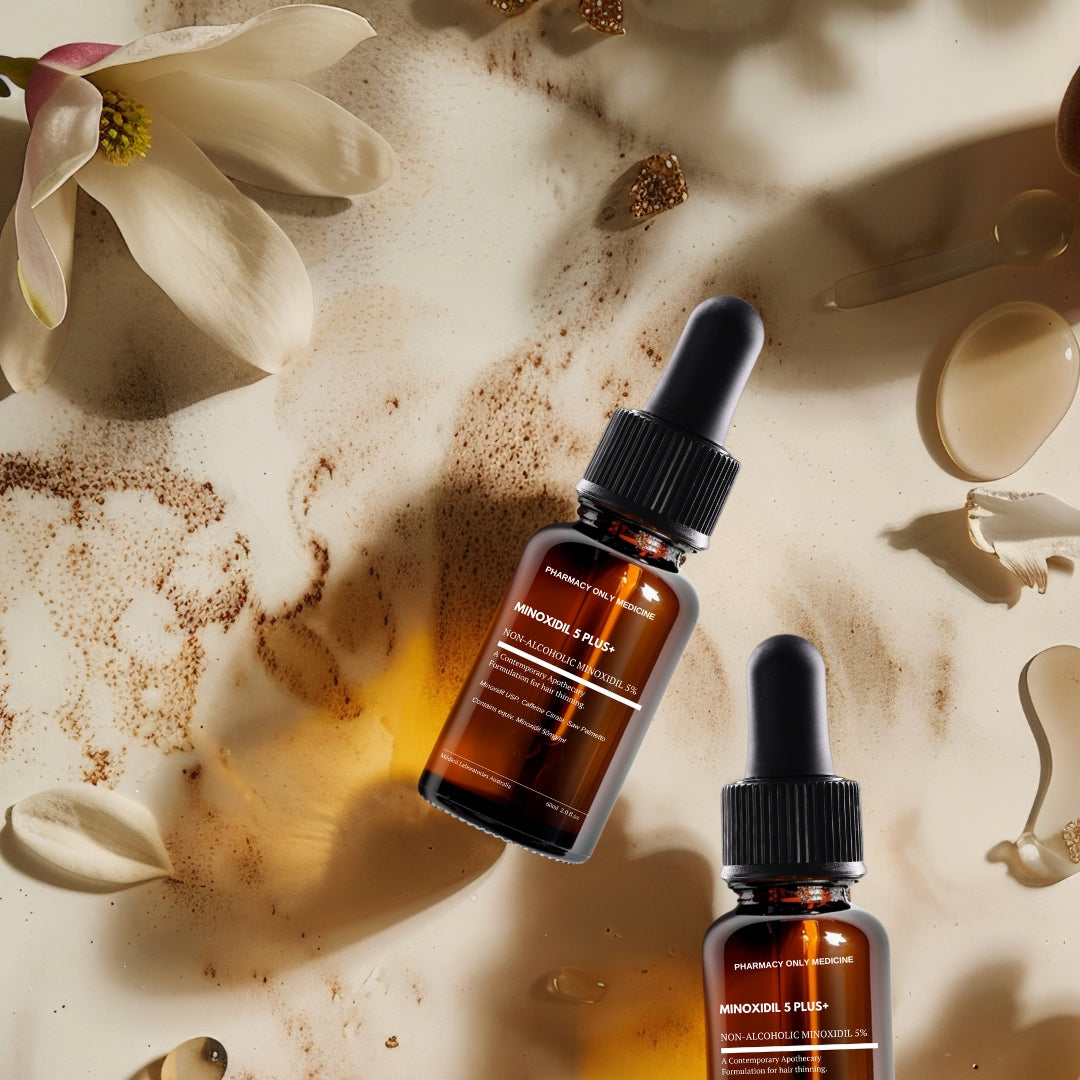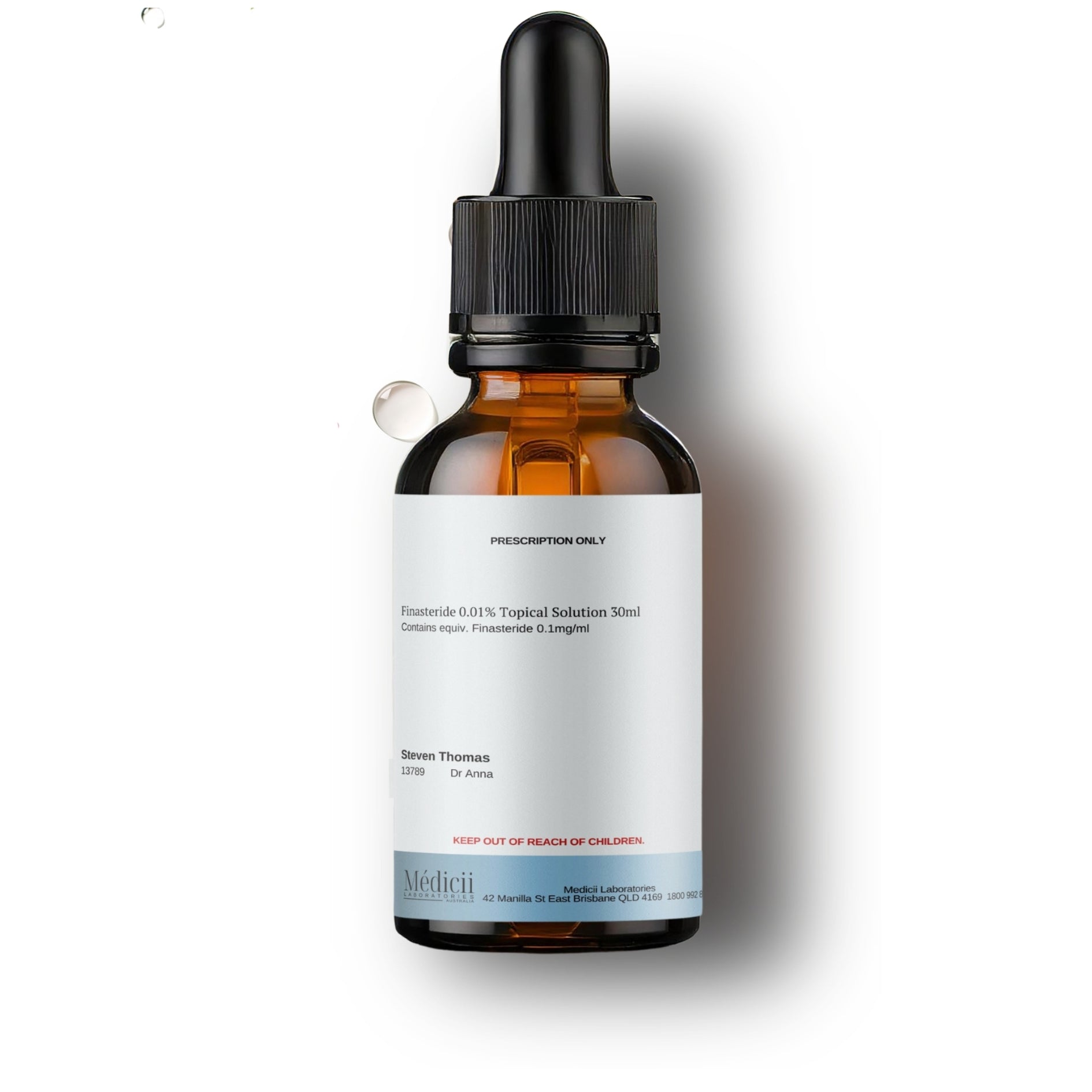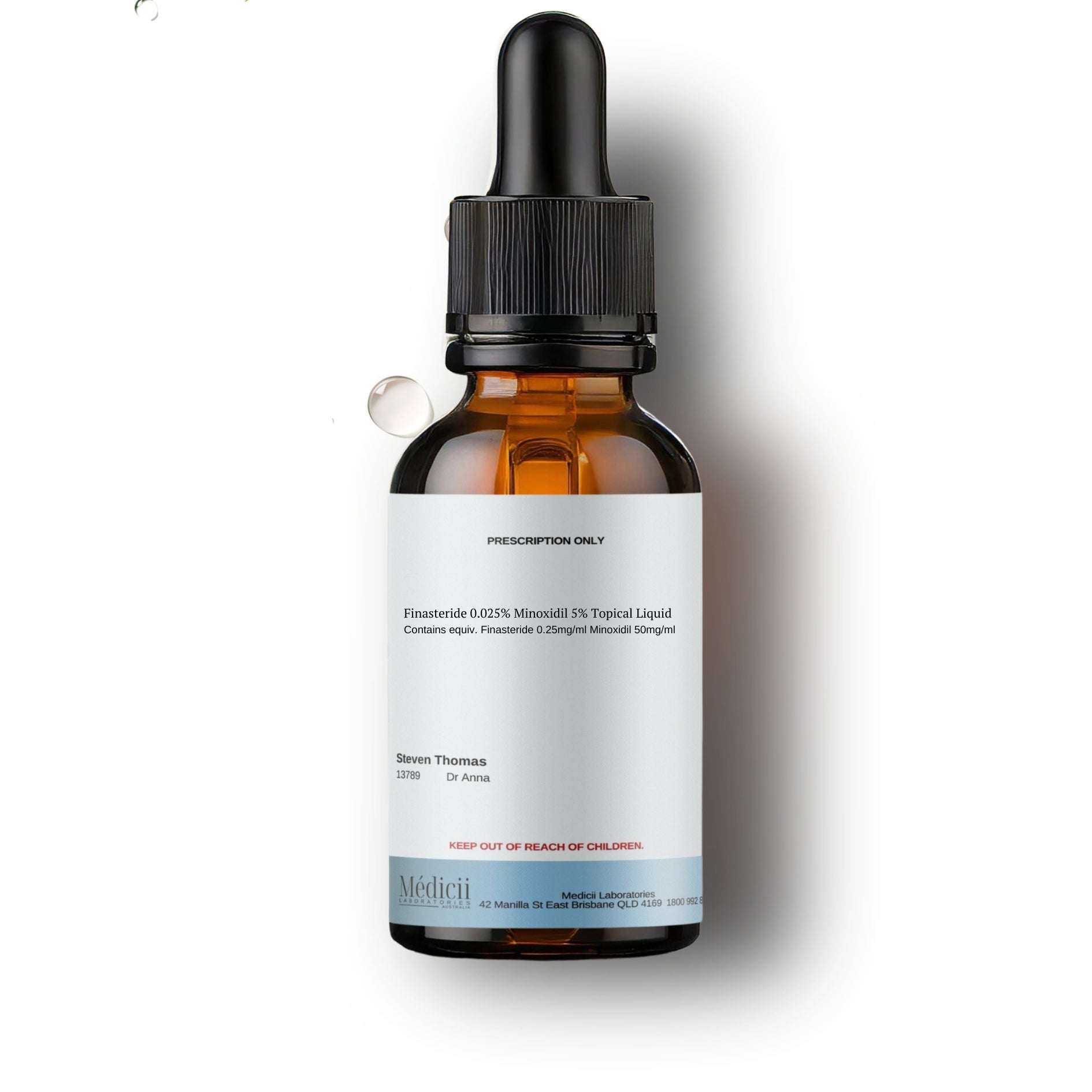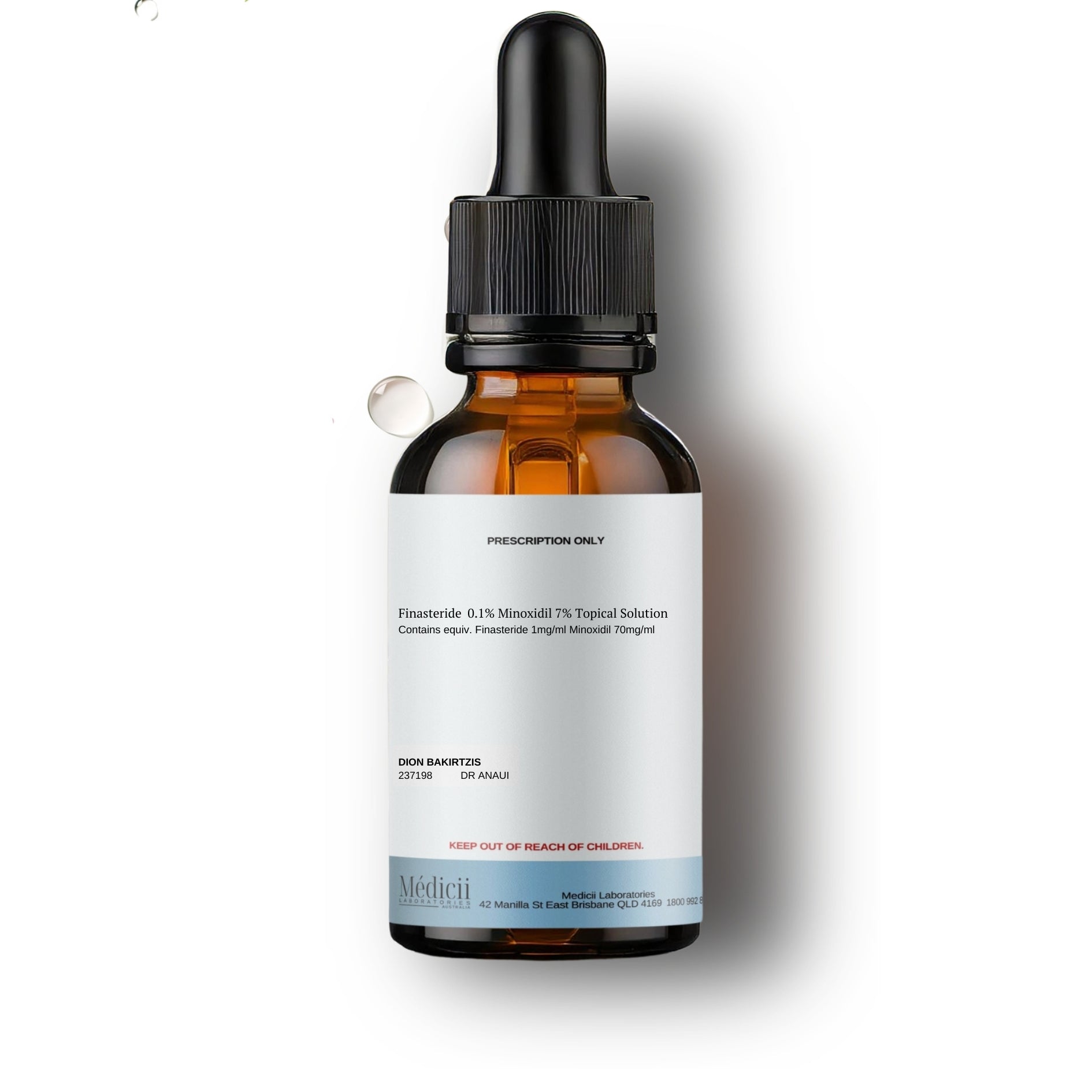
Micro-needling for Hair Loss in Men
Micro-needling may sound like self inflicted pain and trust me, it is but for a good reason. In this article, we will cover:
- What is micro-needling
- Why it works for hair loss
- How and when to use it on it's own to regrow hair
- How to use micro-needling with Minoxidil and/or Finasteride
What is micro-needling?
Microneedling is a simulation method that contains hundreds of tiny medical-grade needles. It is believed that micro needling to balding scalp stimulates hair growth by:
- Stimulation of growth factors to the area,
- The growth factors (GF) promote the formation of new blood vessels over time and
- GF and blood vessels (carrying oxygen and nutrients) encourage follicle growth.
How micro-needling can be used to enhance hair loss topicals
Several studies have shown that the benefits of micro-needling are enhanced when combined with topical Minoxidil in both men and women. When used on its own, research shows that micro-needling can increase hair counts by up to 15%. Other studies demonstrated that 5% topical Minoxidil combined with micro-needling showed an even higher percentage increase in hair growth over twelve weeks. This makes micro-needling a very attractive alternative for hair growth.
Micro-needling can also be combined with topical Finasteride and also topical Dutasteride to enhance their efficacy. In 2015, Dhurat et al demonstrated that microneedling can improve hair density in men who saw stagnant growth with topical Minoxidil and Finasteride.
The devices used for micro-needling include derma roller, micro-needle stamps and automated stamping devices with needle lengths ranging from 0.25mm to 2.5mm.
What size needle length do I need?
Research shows that the needle length that is required to stimulate hair growth depends on a few factors:
- How often you intend to micro-needle,
- If you are combining micro-needling with other modalities, such as Minoxidil and
- The treatment endpoint.
Shorter needle lengths between 0.25mm and 0.5mm will assist with the absorption of topicals into the scalp tissue. The needles need to be longer to reach the dermis where the hair bulb reside. Studies show the best results are seen with derma rollers containing needle lengths of 1.5mm to 2.0mm. That said, some people may also respond to 1.00mm needle lengths. When using an automated stamping pen, needle lengths can be reduced to 0.8mm to 1.0mm.
The difference in needle length considers the angle at which the needle penetrates the skin surface. For derma rollers, it is usually rolled at a 45% degree angle, so the needle length needs to be longer. For automated pens, the penetration occurs at almost a 90-degree angle; hence, a shorter needle is sufficient.
How do I combine topical Minoxidil and micro-needling
Disclaimer: the following advice is to be used a guide only.
STEP ONE:
Pick a day you have time to perform the micro-needling session. Micro-needling does not have to be performed daily to see benefits because you also want to give the skin time to heal and repair.
STEP TWO:
Ensure the area you intend to perform micro-needling is clean and the device is also clean and sterilised. The needles should also be medical-grade needles, not hard plastic. Roll the derma roller over the area until there is redness (erythema). Some reports suggest the session endpoint should result in pin-point bleeding, but again, numerous research show this is not necessary.
STEP THREE:
Apply your topical Minoxidil as usual. You should repeat this process weekly for at least twelve weeks. Micro-needling creates minor puncture wounds to the scalp tissue and, therefore, also enhances the absorption of topical solutions. For this reason, a non-alcoholic Minoxidil formulation is preferred.
What if you didn't want to do microneedling at home?
Research shows it is possible to achieve similar results when micro-needling sessions are done in the clinic every four weeks. The session endpoints are more enhanced, resulting in pin-point bleeding. The degree of wounding is more profound compared to inducing erythema and micro-wounds (which is what you are doing at home). Session endpoints that result in pin-point bleeding should be performed in the clinic due to the risk of infections.
Author: Dan Atkinson B. Pharm
References:
- Lingling, J et al (2022). Effects of microneedling and 5% topical Minoxidil solution combination therapy in androgenic alopecia. Journal of Cosmetic Dermatology. July 21, 2022. Accessed October 16, 2023.
- Dhurat, R et al (2015). Response to micro-needling treatment in Men with Androgenic alopecia who failed to respond to conventional therapy. Indian J Dermatol. 2015 May-Jun; 60(3): 260–263.
- Dhurat, R et al (2013). A Randomised evaluator blinded study of the effects of microneedling in androgenic alopecia: A pilot study. Int J Tricology. 2013 Jan-Mar; 5(1): 6–11.












